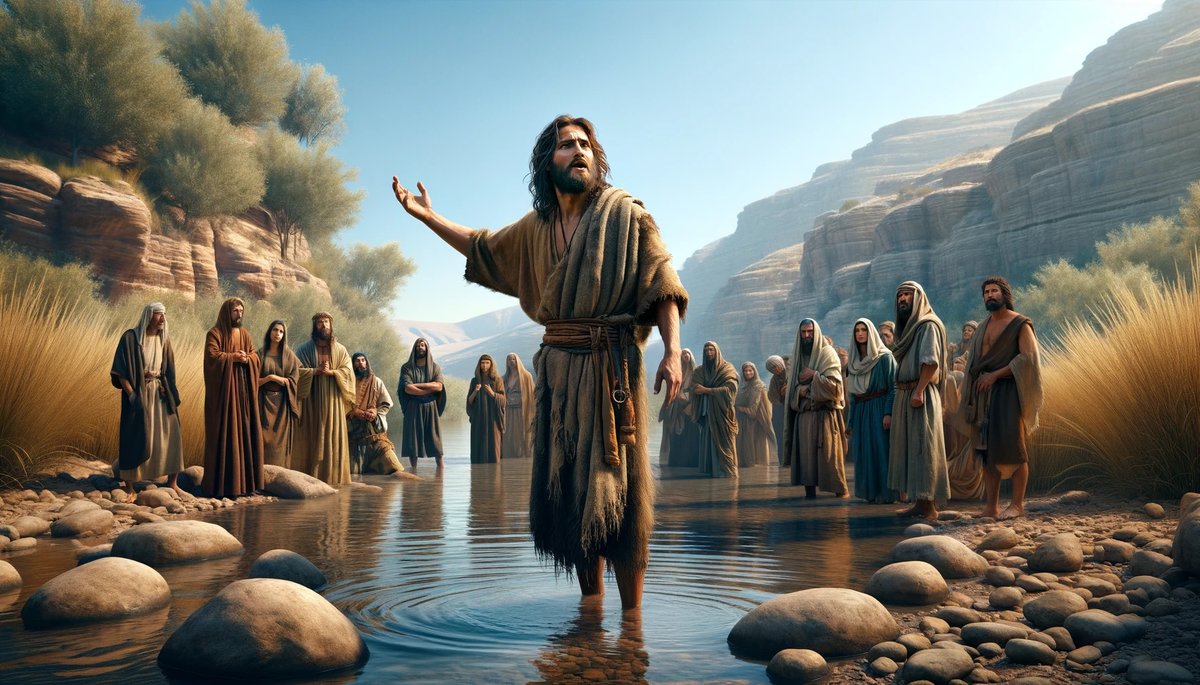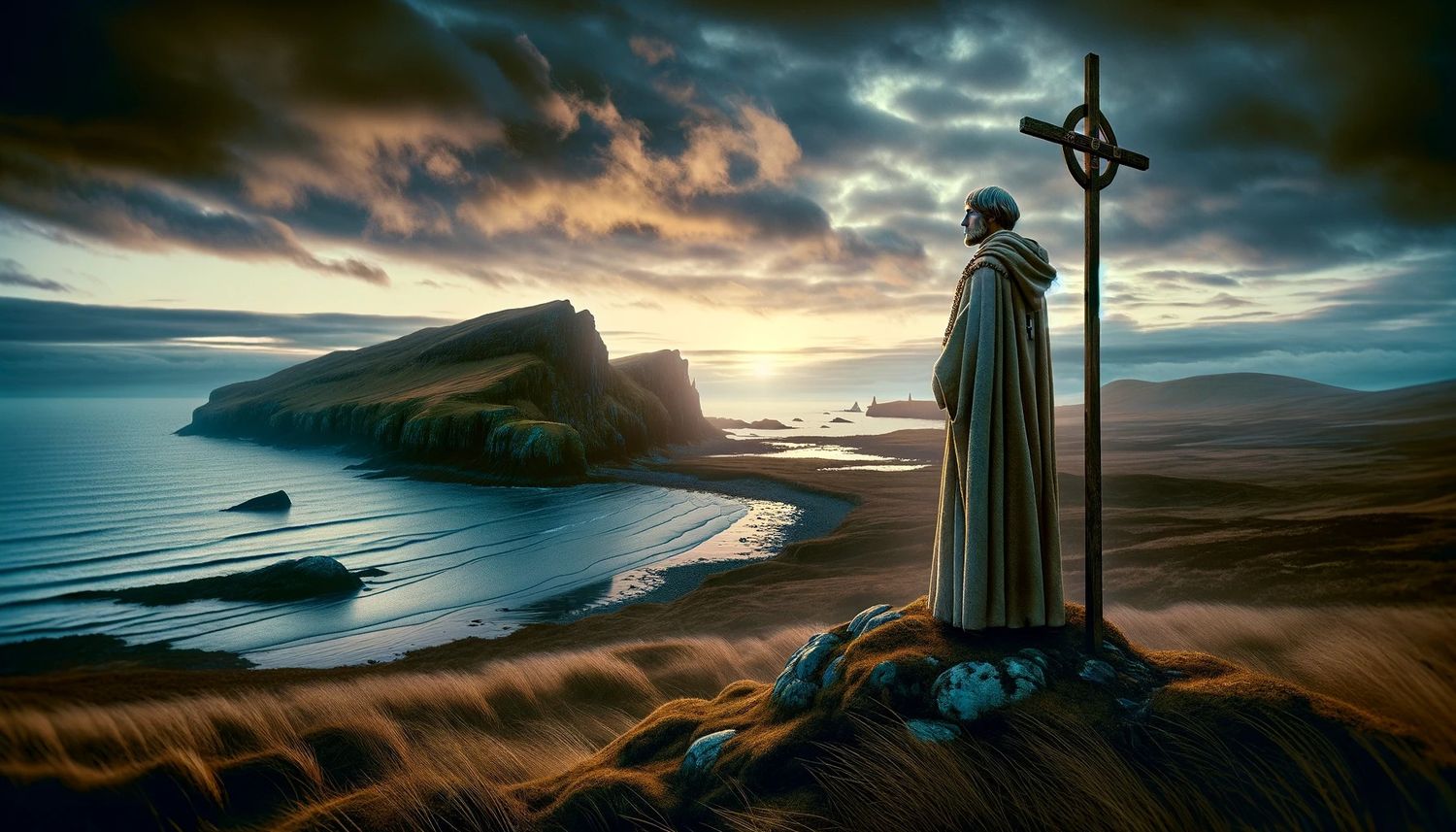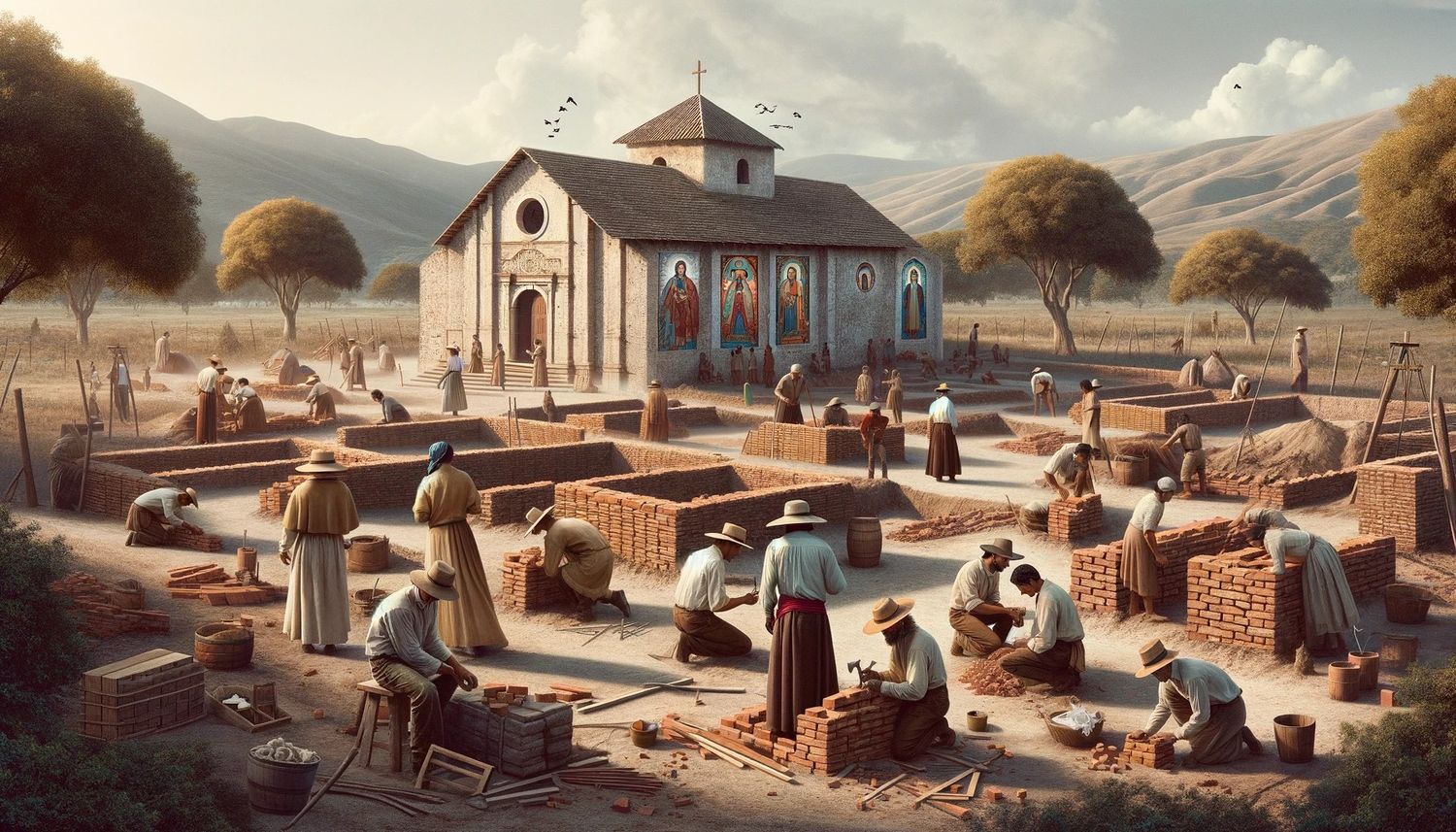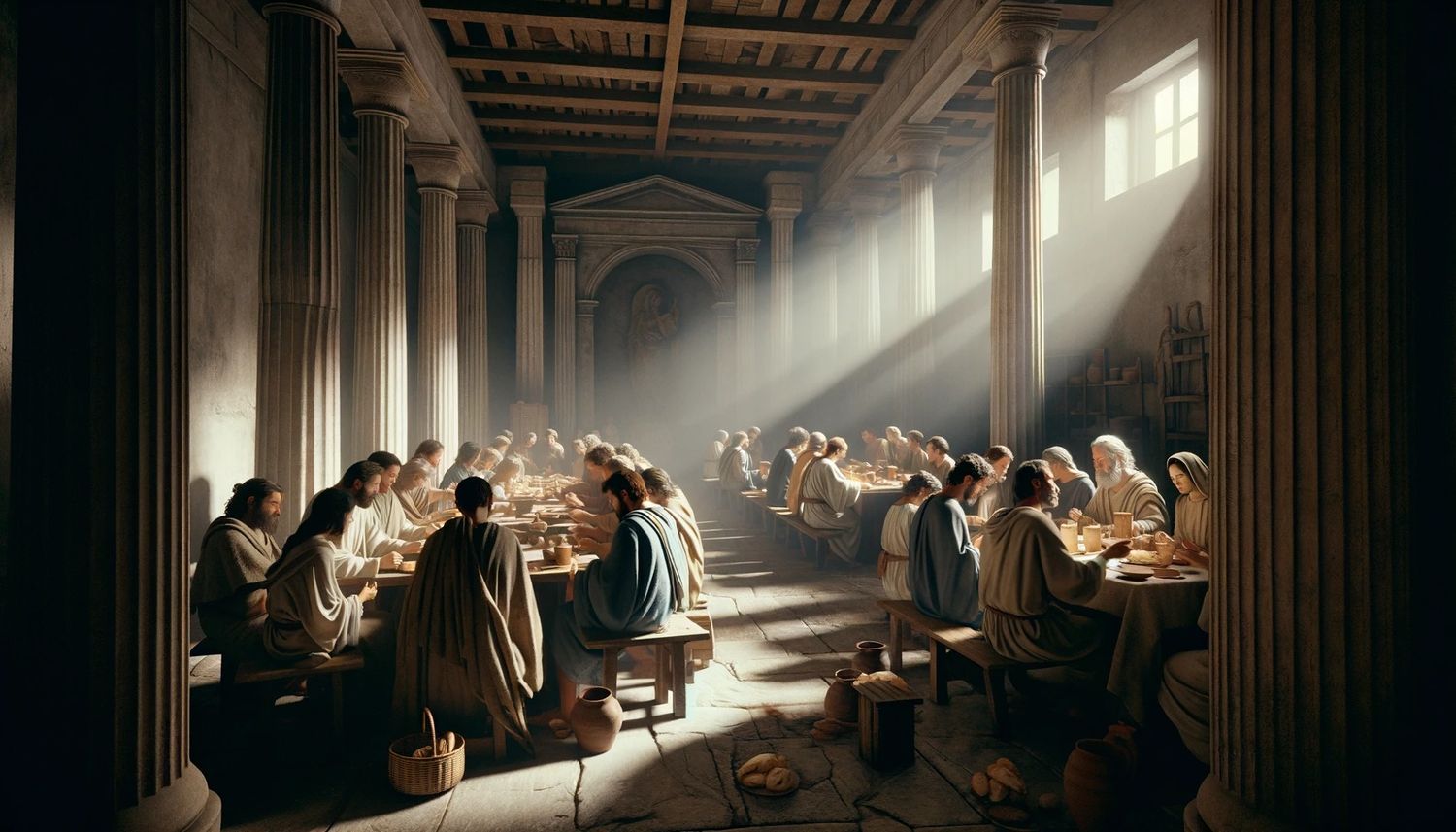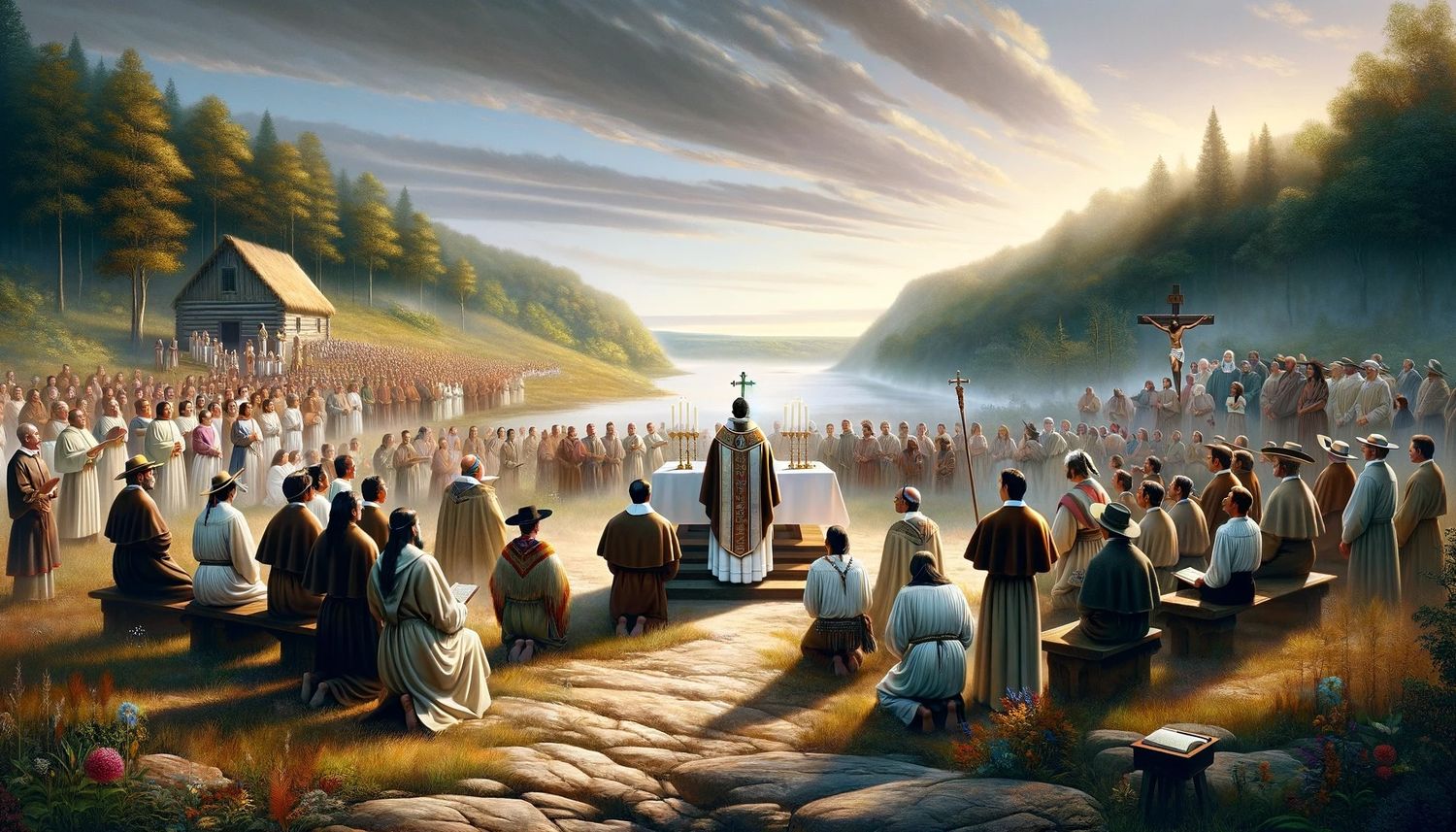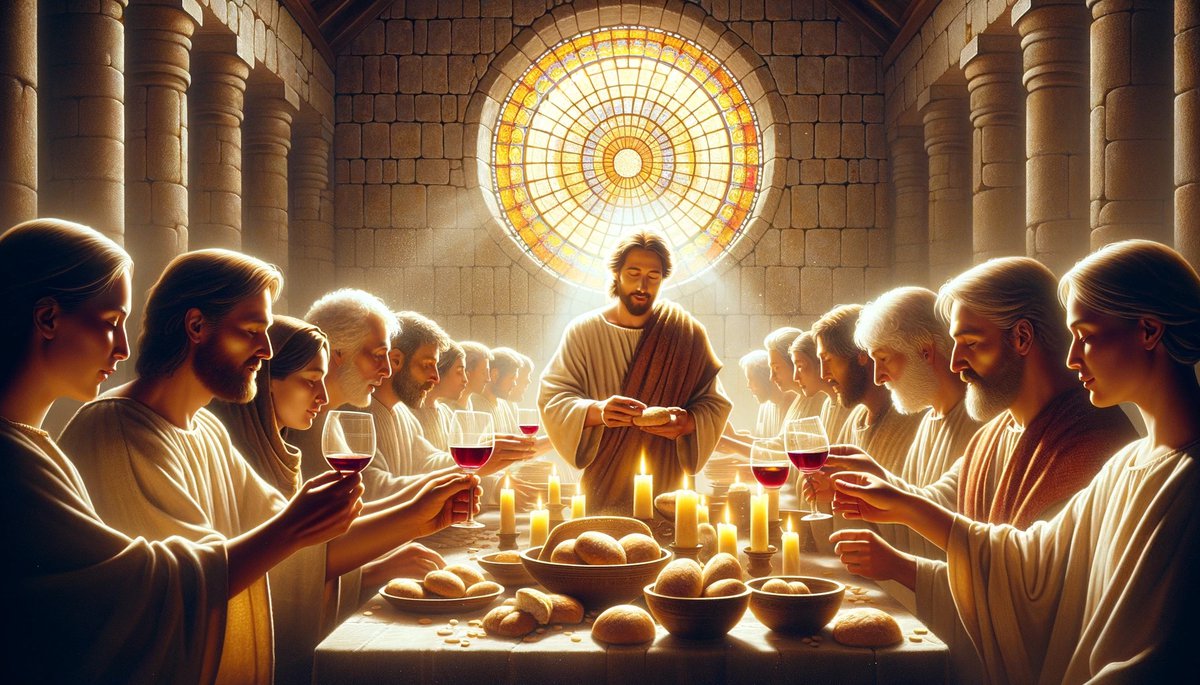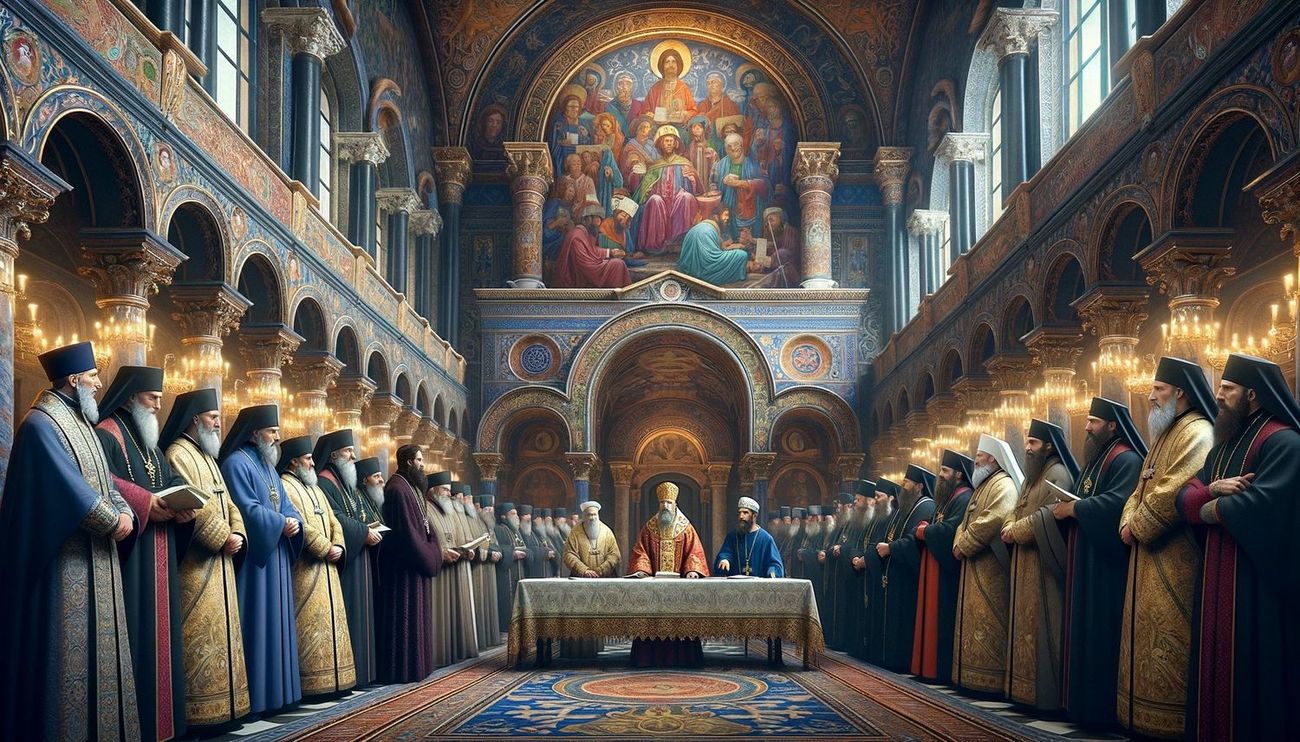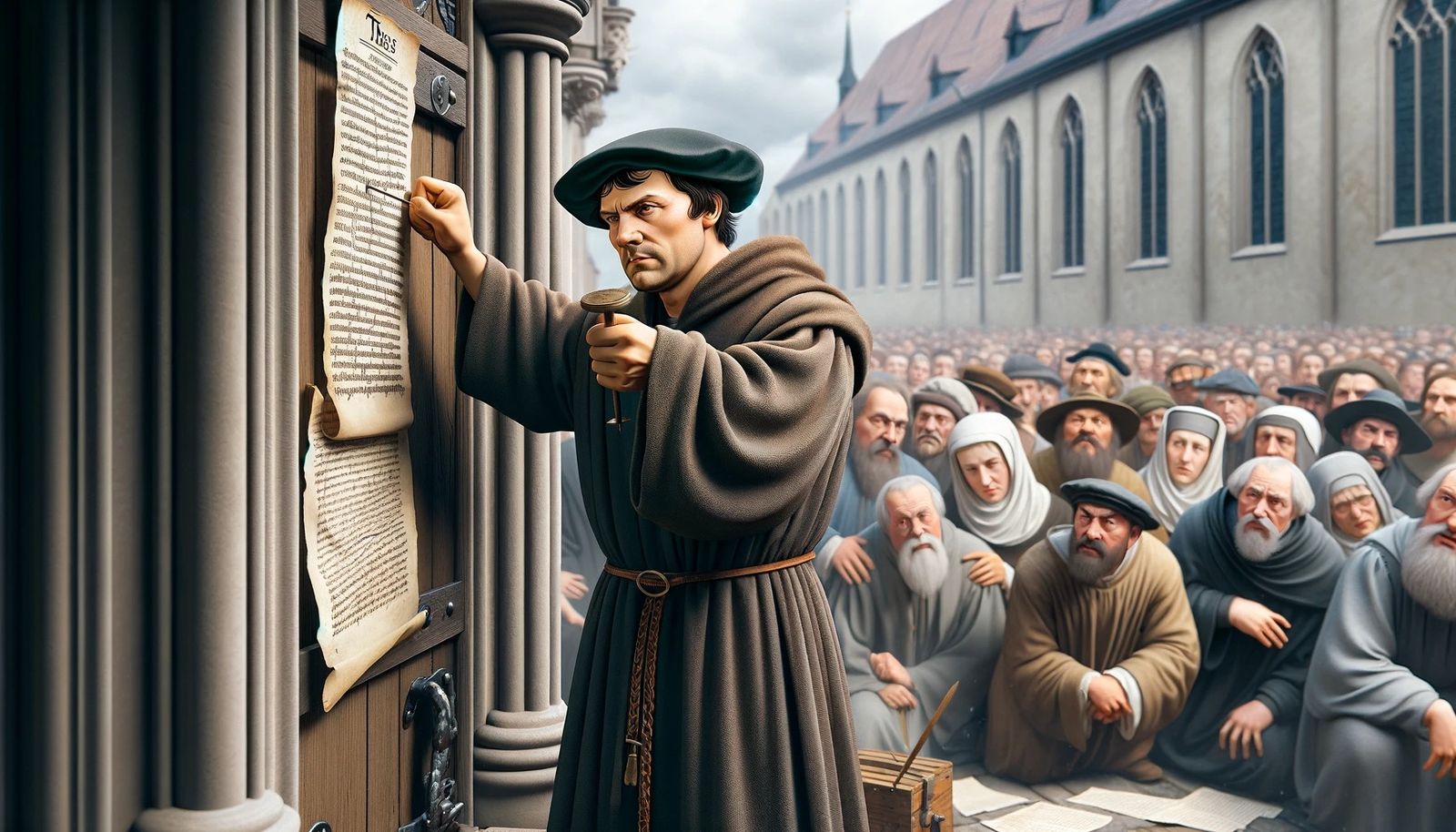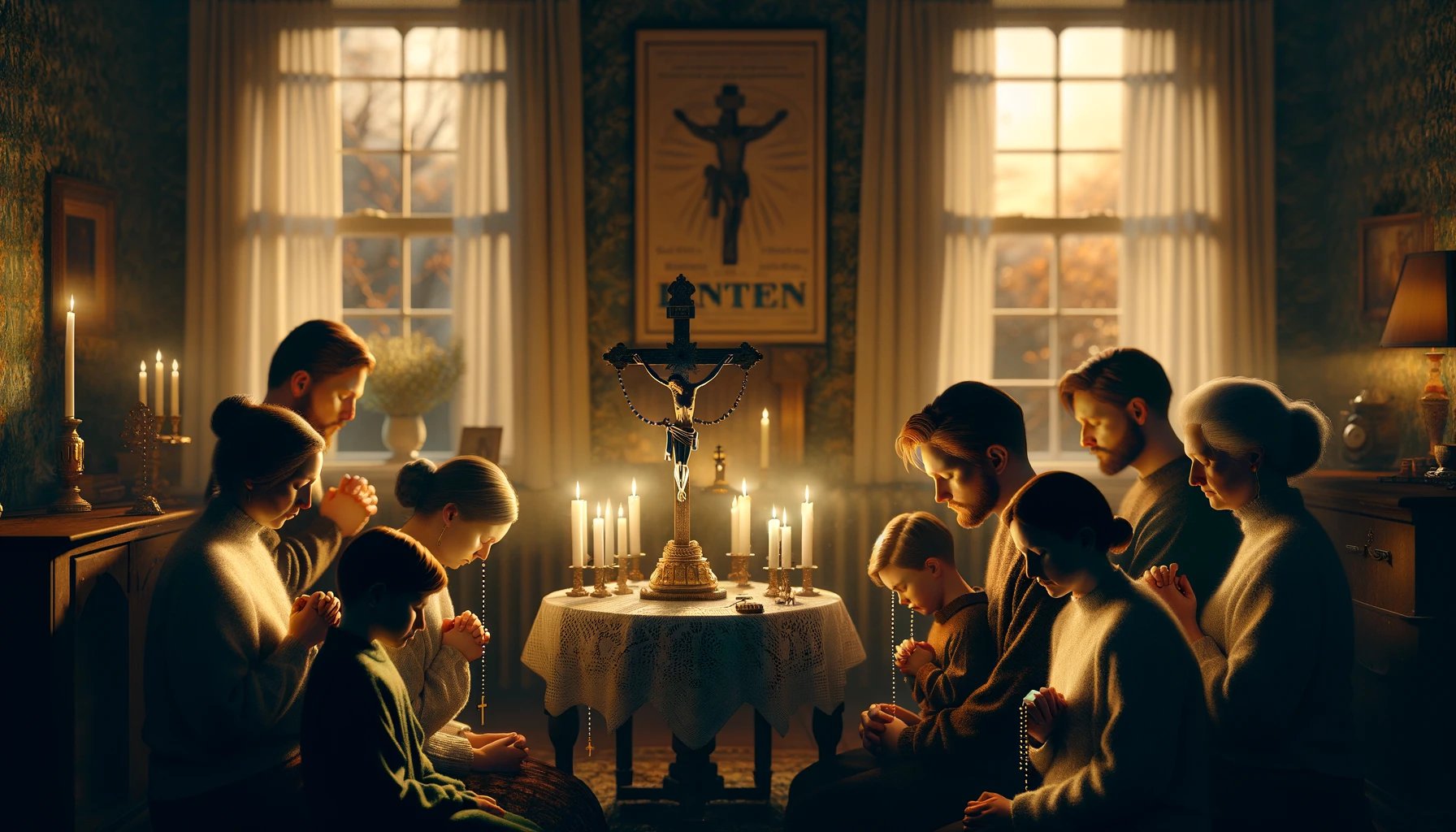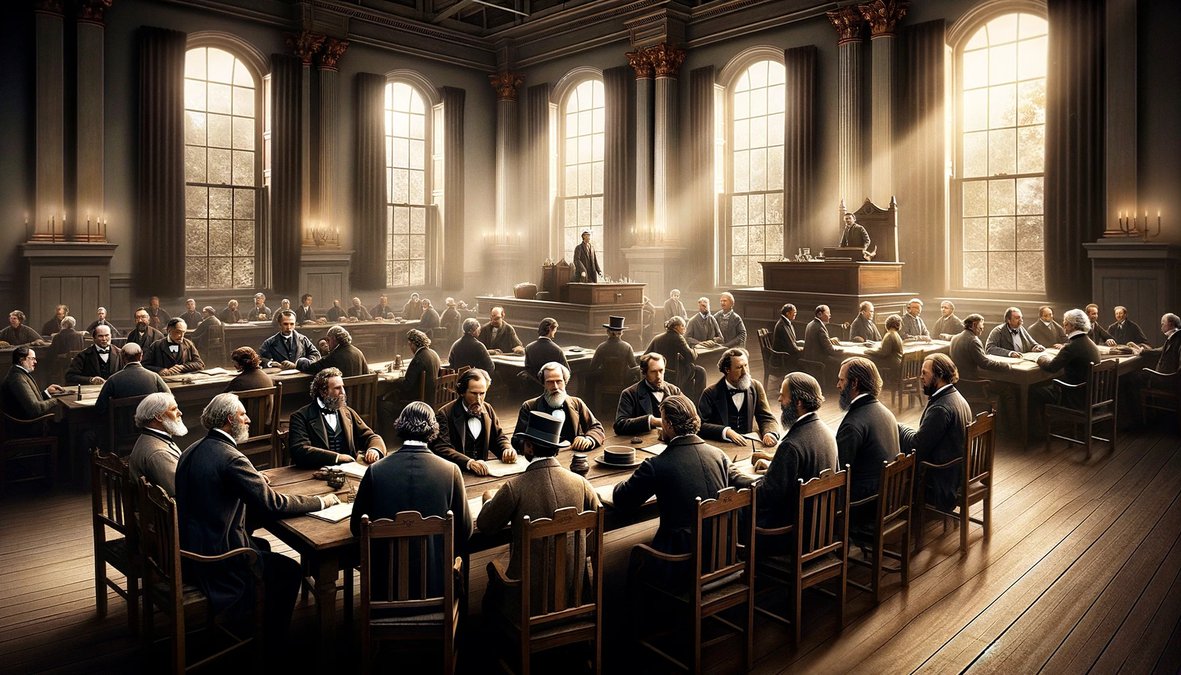Home>Theology and Spirituality>When Did Catholicism Start In Spain


Theology and Spirituality
When Did Catholicism Start In Spain
Published: February 15, 2024
Ericka Andersen, an editor at Christian.net, expertly merges digital strategy with content creation, focusing on faith and societal issues. Her communication skills enhance the platform's engaging narratives, fostering meaningful dialogue on belief's impact on society.
Discover the origins of Catholicism in Spain and its impact on theology and spirituality. Explore the history and evolution of the faith in this influential European nation.
(Many of the links in this article redirect to a specific reviewed product. Your purchase of these products through affiliate links helps to generate commission for Christian.net, at no extra cost. Learn more)
Table of Contents
Introduction
The history of Catholicism in Spain is a rich tapestry woven with threads of conquest, conversion, and cultural transformation. It is a story that spans centuries, encompassing the influences of ancient Rome, the Visigothic Kingdom, Muslim rule, the Spanish Inquisition, and the unification of Spain under the Catholic Monarchs. Understanding the origins and evolution of Catholicism in Spain provides profound insights into the country's cultural, religious, and political landscape.
This journey through time begins with the Roman influence in Spain, where the seeds of Christianity were first sown amidst the grandeur of ancient civilization. The subsequent eras of the Visigothic Kingdom, Muslim rule, and the Christian Reconquest further shaped the religious identity of Spain, leading to the establishment of Catholicism as a dominant force in the country. The pivotal role of the Spanish Inquisition in shaping religious orthodoxy and the unification of Spain under Catholic monarchs further solidified the influence of Catholicism in the country.
As we delve into the historical narrative of Catholicism in Spain, we will uncover the complex interplay of faith, power, and cultural exchange that has left an indelible mark on the Spanish identity. This exploration will shed light on the enduring legacy of Catholicism in Spain and its profound impact on the country's art, architecture, literature, and traditions. Join us on this captivating journey through the annals of history as we unravel the origins and evolution of Catholicism in Spain, a story that continues to resonate through the corridors of time.
Roman Influence in Spain
The roots of Catholicism in Spain can be traced back to the formidable influence of ancient Rome. As the Roman Empire expanded its dominion across the Iberian Peninsula, it brought with it the polytheistic beliefs and religious practices that characterized Roman society. However, amidst the grandeur of Roman civilization, a subtle yet profound transformation was underway – the gradual emergence of Christianity.
During the early centuries of Roman rule, Christianity began to take root in Spain, introduced by traders, travelers, and early missionaries. The teachings of Jesus Christ found receptive ears among the diverse populace of the Iberian Peninsula, offering a message of hope, salvation, and spiritual renewal. The spread of Christianity in Spain was not without challenges, as it encountered resistance from adherents of traditional Roman deities and faced intermittent periods of persecution.
Despite these obstacles, the Christian faith continued to gain traction, finding favor among both the common people and influential figures within Roman society. The establishment of Christian communities and the construction of early churches marked the gradual consolidation of Christianity as a significant religious force in Spain. The Council of Elvira, held in the early 4th century, exemplified the growing organizational structure of the Christian church in Spain, laying the groundwork for its enduring presence in the region.
The conversion of Emperor Constantine to Christianity in the early 4th century further catalyzed the ascent of Christianity within the Roman Empire, including the territories of Spain. With the Edict of Milan in 313 AD, which granted religious tolerance to Christians, the faith experienced a newfound freedom to flourish and propagate its teachings. This pivotal moment in Roman history paved the way for the formal recognition and acceptance of Christianity within the empire, setting the stage for its enduring legacy in Spain and beyond.
The Roman influence in Spain, characterized by its expansive infrastructure, vibrant urban centers, and cultural amalgamation, provided a fertile ground for the growth of Christianity. The syncretism of Roman and Christian traditions, the construction of basilicas and cathedrals, and the proliferation of Christian iconography all bore witness to the profound impact of Roman civilization on the development of Catholicism in Spain.
As the Roman Empire waned and gave way to subsequent epochs of history, the seeds of Christianity sown during its dominion continued to germinate, laying the groundwork for the enduring presence of Catholicism in Spain. The legacy of Roman influence on the religious landscape of Spain serves as a testament to the enduring interplay of faith and culture, shaping the contours of Spain's spiritual identity for centuries to come.
Visigothic Kingdom and Christianity
Following the decline of Roman rule in the Iberian Peninsula, the Visigoths, a Germanic tribe, established their kingdom in Spain. This era marked a significant chapter in the evolution of Christianity in the region. The Visigoths, initially adherents of Arianism, a theological belief that diverged from mainstream Christianity, gradually transitioned to Catholicism, profoundly impacting the religious landscape of Spain.
The conversion of the Visigothic rulers to Catholicism heralded a transformative period for the Christian faith in Spain. King Reccared I's pivotal decision to embrace Catholicism at the Third Council of Toledo in 589 AD marked a definitive shift in the religious orientation of the Visigothic Kingdom. This momentous event not only signaled the official adoption of Catholicism as the state religion but also set in motion a series of ecclesiastical reforms and doctrinal unification.
The consolidation of Catholicism as the predominant faith within the Visigothic Kingdom brought about a flourishing of religious institutions, the construction of churches, and the propagation of Christian teachings. The Councils of Toledo, convened by the Visigothic monarchs, played a crucial role in shaping the doctrinal and administrative framework of the Church in Spain, laying the groundwork for its enduring influence.
The interplay between the Visigothic rulers and the Catholic Church engendered a symbiotic relationship, wherein the Church wielded significant influence in matters of governance, education, and social cohesion. The codification of Visigothic laws, such as the Lex Visigothorum, reflected the fusion of Roman legal principles with Christian ethics, underscoring the profound impact of Catholicism on the legal and moral fabric of Visigothic society.
The era of the Visigothic Kingdom witnessed the crystallization of Catholicism as a defining element of Spanish identity, shaping the religious consciousness and cultural ethos of the populace. The architectural marvels of Visigothic churches, adorned with intricate mosaics and religious iconography, stand as enduring testaments to the enduring legacy of Christianity during this epoch.
The epoch of the Visigothic Kingdom laid the groundwork for the enduring influence of Catholicism in Spain, setting the stage for subsequent chapters in the country's religious and historical narrative. The transition from Arianism to Catholicism, the ecclesiastical reforms, and the symbiotic relationship between the Visigothic rulers and the Church all contributed to the indelible imprint of Catholicism on the evolving tapestry of Spanish civilization.
Muslim Rule and Christian Reconquest
The period of Muslim rule in Spain, known as the Islamic Golden Age, left an indelible mark on the religious, cultural, and intellectual landscape of the Iberian Peninsula. Following the Islamic conquest of Visigothic Hispania in 711 AD, Spain experienced a profound transformation under Muslim governance. The Umayyad Caliphate established Al-Andalus, a vibrant and cosmopolitan society characterized by its architectural splendor, scholarly pursuits, and religious pluralism.
During the early centuries of Muslim rule, Christians and Jews coexisted alongside their Muslim counterparts, contributing to the flourishing of art, science, and philosophy. The city of Cordoba, in particular, emerged as a beacon of learning and tolerance, boasting magnificent architectural marvels such as the Great Mosque of Cordoba, a testament to the fusion of Islamic and Christian influences.
Amidst the cultural efflorescence of Al-Andalus, the Christian kingdoms in the northern regions of Spain embarked on a protracted campaign known as the Reconquista, aimed at reclaiming the territories under Muslim control. This period of Christian reconquest, spanning several centuries, witnessed a complex interplay of military conflicts, diplomatic alliances, and religious fervor.
The legendary figure of El Cid, a valiant Christian knight, epitomized the spirit of the Reconquista, leading military campaigns and championing the cause of Christian resurgence. The gradual reconquest of territories such as Toledo, Valencia, and Seville marked significant milestones in the gradual reversal of Muslim dominion in Spain.
The climactic event of the Reconquista unfolded with the fall of Granada in 1492, culminating in the triumphant victory of the Catholic Monarchs, Ferdinand and Isabella. The capture of Granada not only symbolized the end of Muslim rule in Spain but also set the stage for the unification of the country under a Catholic banner.
The epoch of Muslim rule and Christian reconquest in Spain engendered a complex interweaving of cultural exchange, religious conflict, and territorial realignment. The enduring legacy of Al-Andalus, characterized by its architectural splendor, intellectual ferment, and interfaith coexistence, continues to resonate through the annals of history, leaving an indelible imprint on the multicultural tapestry of Spanish heritage.
The Christian reconquest, while marking a pivotal chapter in the resurgence of Catholicism, also bore witness to the enduring legacy of Islamic influence on Spanish art, architecture, and language. The convivencia, or coexistence, of Muslim, Christian, and Jewish communities during the era of Al-Andalus underscores the profound interplay of religious diversity and cultural synthesis that shaped the contours of Spanish identity.
The epoch of Muslim rule and Christian reconquest in Spain serves as a testament to the enduring interplay of faith, power, and cultural exchange, leaving an indelible mark on the religious and historical narrative of the Iberian Peninsula.
The Spanish Inquisition
The Spanish Inquisition stands as a defining chapter in the history of Catholicism in Spain, casting a long shadow over the religious, social, and political landscape of the Iberian Peninsula. Instituted by the Catholic Monarchs, Ferdinand II of Aragon and Isabella I of Castile, in 1478, the Spanish Inquisition aimed to enforce religious orthodoxy, combat heresy, and consolidate the authority of the Catholic Church.
At its inception, the Spanish Inquisition targeted conversos, Jews and Muslims who had converted to Christianity, as well as their descendants, suspecting them of practicing their former faith in secret. The establishment of the Tribunal of the Holy Office of the Inquisition, with its network of inquisitors and courts, ushered in an era of pervasive surveillance, interrogation, and persecution.
The methods employed by the Spanish Inquisition were characterized by their severity and ruthlessness. Suspects were subjected to interrogation, often under duress, and those found guilty of heresy faced draconian punishments, including imprisonment, confiscation of property, and in some cases, execution by burning at the stake. The infamous auto-da-fé, or act of faith, served as a public spectacle of penance and punishment, instilling fear and obedience among the populace.
The impact of the Spanish Inquisition reverberated across all strata of society, instilling a climate of fear and suspicion. The specter of denunciation and persecution loomed large, leading to a culture of self-censorship and conformity. The relentless pursuit of heresy and the suppression of dissent cast a pall over intellectual inquiry and religious expression, stifling the vibrant tapestry of cultural and religious diversity that had characterized Spain during the era of Al-Andalus.
The Spanish Inquisition, while ostensibly aimed at preserving religious orthodoxy, also served as a tool of political control and social coercion. Its far-reaching influence extended beyond matters of faith, shaping the contours of Spanish identity and governance. The entwining of religious authority with state power, exemplified by the role of the inquisitors as agents of both the Church and the Crown, underscored the pervasive influence of the Inquisition on the fabric of Spanish society.
The legacy of the Spanish Inquisition, marked by its dark legacy of persecution and intolerance, continues to evoke profound reflection and debate. Its impact on the collective memory of Spain, the enduring trauma inflicted on those targeted, and the enduring specter of religious extremism serve as poignant reminders of the complex interplay of faith, power, and human agency in shaping the course of history.
The Spanish Inquisition, with its enduring legacy of persecution and control, serves as a sobering reminder of the perils of unchecked power and the enduring quest for religious and ideological freedom. Its imprint on the historical narrative of Spain underscores the profound interplay of faith, governance, and human rights, leaving an indelible mark on the collective consciousness of the Iberian Peninsula.
Catholic Monarchs and the Unification of Spain
The reign of Ferdinand II of Aragon and Isabella I of Castile, known as the Catholic Monarchs, heralded a transformative era in the history of Spain. Their union through marriage in 1469 not only united two powerful kingdoms but also set in motion a series of events that would culminate in the unification of Spain. The marriage of Ferdinand and Isabella, often hailed as a pivotal moment in Spanish history, laid the groundwork for the consolidation of royal authority, the expansion of Catholicism, and the pursuit of territorial unification.
The Catholic Monarchs pursued a multifaceted agenda aimed at centralizing power, fostering religious orthodoxy, and extending the territorial reach of their domains. Their marriage forged a formidable alliance, enabling them to navigate the complex web of regional allegiances and dynastic rivalries that had long characterized the Iberian Peninsula. Through strategic diplomacy, military campaigns, and astute governance, Ferdinand and Isabella endeavored to assert their authority and bring about a cohesive vision of a unified Spain.
Central to the agenda of the Catholic Monarchs was the propagation of Catholicism as a unifying force that transcended regional divisions. The Edict of Expulsion in 1492, which mandated the expulsion of Jews from Spain, and the subsequent completion of the Reconquista with the fall of Granada, symbolized the triumph of Catholic authority and the pursuit of religious homogeneity. The establishment of the Spanish Inquisition, while controversial and fraught with repercussions, served as a means of enforcing religious conformity and consolidating the influence of the Catholic Church.
The marriage of Ferdinand and Isabella also laid the groundwork for the exploration and colonization of the Americas, a venture that would significantly expand the territorial dominion of Spain and usher in an era of unprecedented wealth and influence. The patronage of Christopher Columbus's historic voyage in 1492, which led to the discovery of the New World, exemplified the ambitious vision of the Catholic Monarchs to extend the frontiers of Spanish influence and solidify their legacy as visionary rulers.
The enduring legacy of the Catholic Monarchs, characterized by their pursuit of religious unity, territorial expansion, and centralized authority, continues to resonate through the annals of Spanish history. Their reign marked a pivotal juncture in the evolution of Spain, laying the foundations for the emergence of a unified nation with a shared faith, language, and cultural identity. The indelible imprint of the Catholic Monarchs on the historical narrative of Spain serves as a testament to their enduring legacy as architects of a new era in the annals of Spanish civilization.
Conclusion
The journey through the origins and evolution of Catholicism in Spain unveils a tapestry woven with the threads of conquest, conversion, and cultural transformation. From the enduring influence of ancient Rome to the epoch of the Visigothic Kingdom, the era of Muslim rule and Christian reconquest, the shadow of the Spanish Inquisition, and the transformative reign of the Catholic Monarchs, the historical narrative of Catholicism in Spain reflects a complex interplay of faith, power, and human agency.
The Roman influence in Spain, characterized by the syncretism of Roman and Christian traditions, laid the groundwork for the enduring presence of Christianity in the Iberian Peninsula. The gradual transition from Arianism to Catholicism during the era of the Visigothic Kingdom marked a pivotal chapter in the consolidation of Catholicism as a defining element of Spanish identity.
The period of Muslim rule and Christian reconquest in Spain witnessed a profound interweaving of cultural exchange, religious conflict, and territorial realignment. The convivencia of Muslim, Christian, and Jewish communities during the era of Al-Andalus underscores the enduring legacy of religious diversity and cultural synthesis that shaped the contours of Spanish identity.
The Spanish Inquisition, with its enduring legacy of persecution and control, serves as a sobering reminder of the perils of unchecked power and the enduring quest for religious and ideological freedom. Its imprint on the historical narrative of Spain underscores the profound interplay of faith, governance, and human rights, leaving an indelible mark on the collective consciousness of the Iberian Peninsula.
The reign of the Catholic Monarchs, Ferdinand and Isabella, heralded a transformative era in the history of Spain, laying the foundations for the emergence of a unified nation with a shared faith, language, and cultural identity. Their pursuit of religious unity, territorial expansion, and centralized authority left an indelible imprint on the historical narrative of Spain, serving as a testament to their enduring legacy as architects of a new era in the annals of Spanish civilization.
The enduring legacy of Catholicism in Spain, shaped by the interplay of conquest, conversion, and cultural exchange, continues to resonate through the corridors of time, leaving an indelible mark on the country's cultural, religious, and historical identity. It is a story that transcends the boundaries of time and space, offering profound insights into the enduring interplay of faith, power, and human agency in shaping the course of history.



